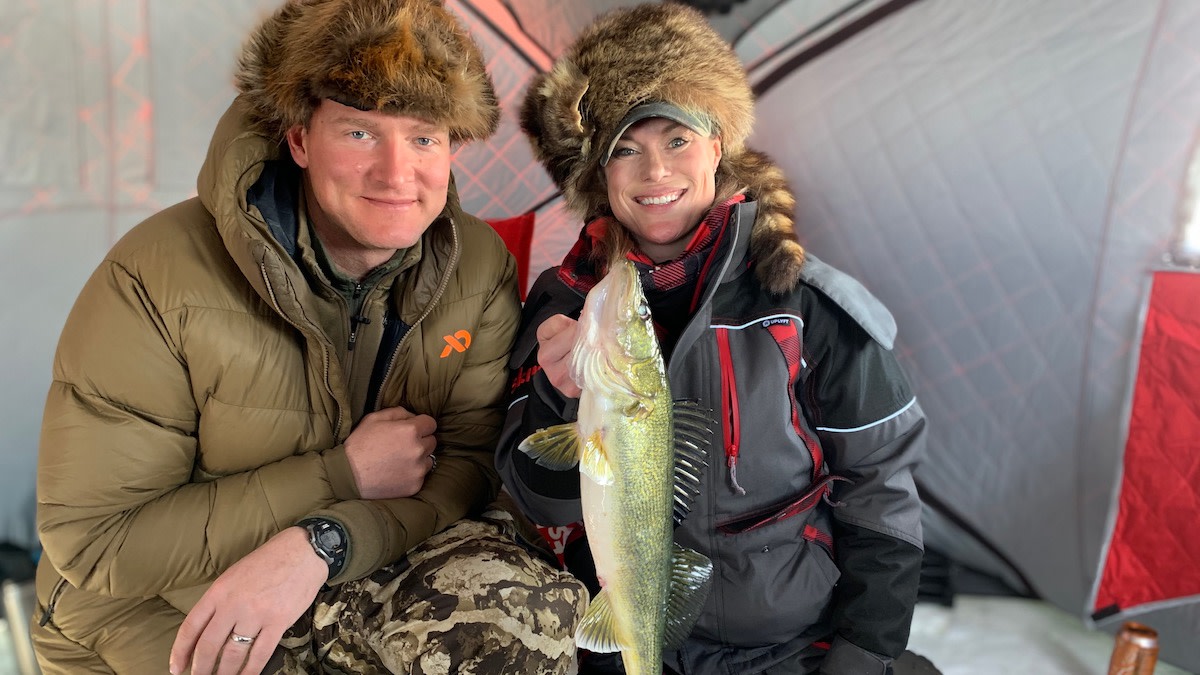
If there’s one thing anglers can agree on, it’s that finding walleye is a challenge. And, even when you do find them, catching is no gimme. Since walleye are less aggressive in winter, they typically take their time inspecting lures. Much like a good baseball pitcher, a quality walleye angler needs to have multiple presentations in their arsenal. Here are five that will help you catch more walleye while ice fishing this winter.
Eyes to the Sky
It’s important to remember walleyes have good vision, particularly in low light. While it may be critical to “pound” a jig on the bottom for species such as perch or crappie, you don’t need to do that with walleye.
When you have a walleye eyeing your lure, attempt to move the fish higher in the water column. Their eyes are on top of their head, making it natural for them to follow food upwards. The more you can “work” a walleye up and away from the bottom, the higher the likelihood you will get it to commit. Often, once you get a walleye to chase your lure off the bottom, a second walleye will move in and bite before the original fish.
Go High, Go Low
I always like to have a rod set at 3 to 6 feet off the bottom, even if that’s not where I’m marking fish. A presentation at this height draws suspended walleye close enough to mark them. If you didn’t know, your transducer’s sonar cone widens as it goes deeper. That means there could be suspended walleye nearby, but you are less likely to pick them up on your flasher than if they were near the bottom.
Inversely, even if you’re only marking suspended fish, keep a rod set tight to the bottom. There will always be walleye roaming within a foot of the bottom and this presentation is for them. This is all to say, flasher be damned, work the entire water column.
Bait and Switch
If you’re marking fish and not catching them while using the “go high, go low” technique, call an audible. Because lure preferences change by the hour, you need to be willing to adjust at the drop of a hat.
If a walleye is eyeing your low rod but not committing, reel up that line and drop the high rod in the fish’s face. This instant swap is a simple but deadly tactic. Many days the switch is all you need to get a walleye to commit, or to rule out presentations that just aren’t working. You can make this same swap if a finicky fish approaches your high rod.
Shake, Rattle, and Roll
Rattles have become increasingly popular over the last decade for walleye ice anglers. It’s for good reason. Because you can’t cover nearly as much ground as when you’re open water fishing, using a lure that can “call” fish in is critical.
A rattle spoon, such as the Northland Buckshot or Silver Streak Rattle Streak, can draw fish in from a distance. Now here’s a dirty secret: I usually don’t catch a ton of fish on the spoons themselves. They serve the purpose of bringing walleye in, but usually it’s another lure that seals the deal. Rattle spoons are a great option for when the flasher goes blank. Give the spoon a couple hard jigs, followed by a pause, then watch as nearby fish move in.
K.I.S.S.
In many matters besides ice fishing, we humans tend to complicate things. Sometimes that old adage “keep it simple, stupid” is what we need to remember out on the frozen lake. With all of the fancy bells and whistles available, oftentimes the best lure is a simple, plain jig on a dead stick. I can’t count the number of walleyes I’ve called in with glide baits or spoons, only to have them grab the cheapest presentation from my tackle box.
Not all jigs are created equal, though. Look for a jig with a high-quality, oversized hook. Many of the smaller jigs used for ice fishing aren’t long enough for a good hookset, especially when paired with a hearty minnow. The Clam Drop TG and Northland Long Shank Fireball are my go-to jigs for this reason.
Just as most good pitchers have more than five pitches, and the best walleye anglers will have lots more tricks up their sleeves. But if you just master these five, you’ll be unlikely to strike out on most days.




